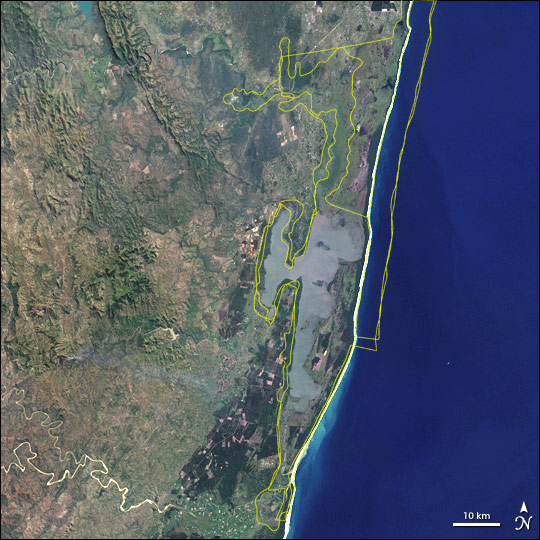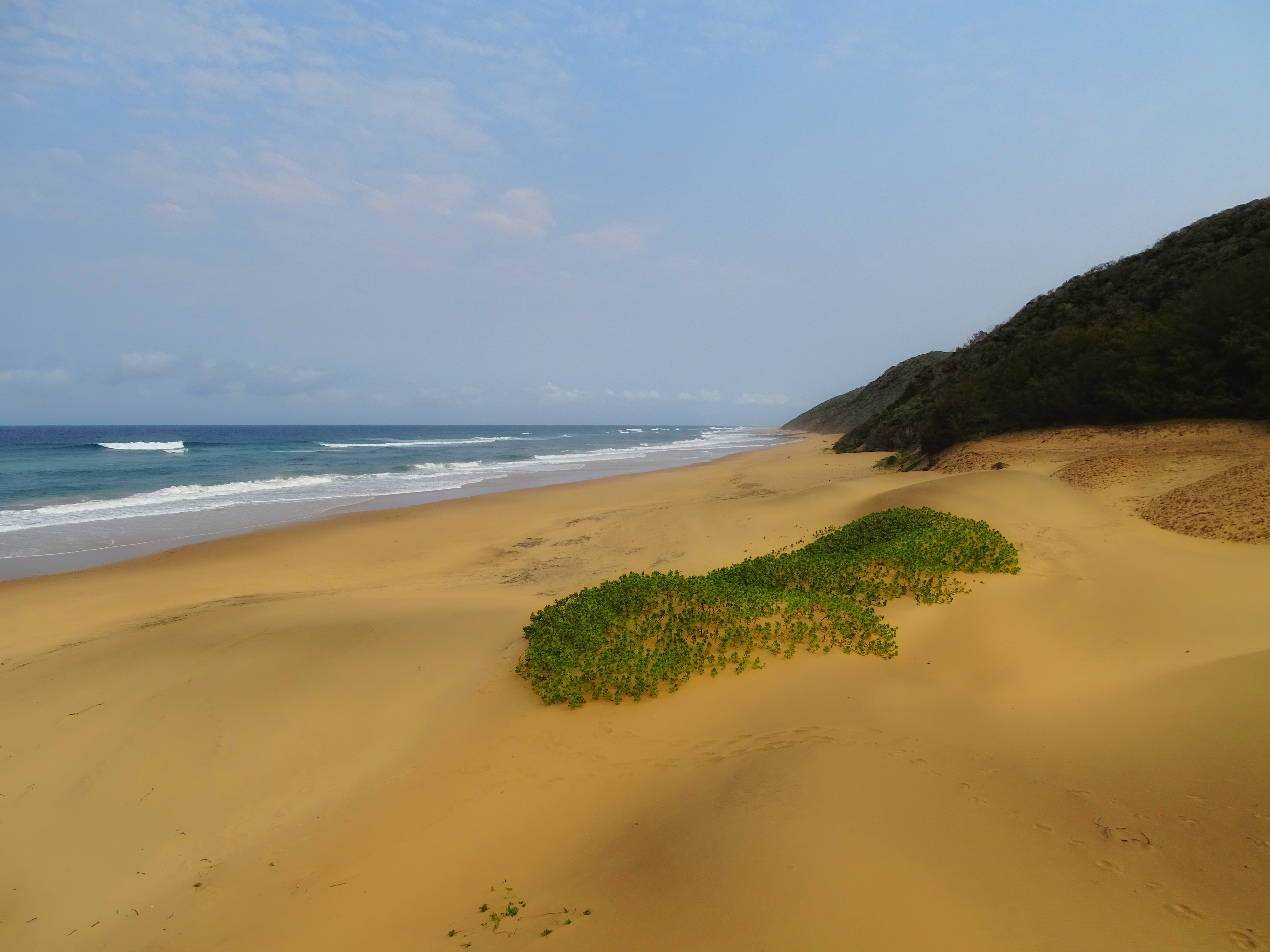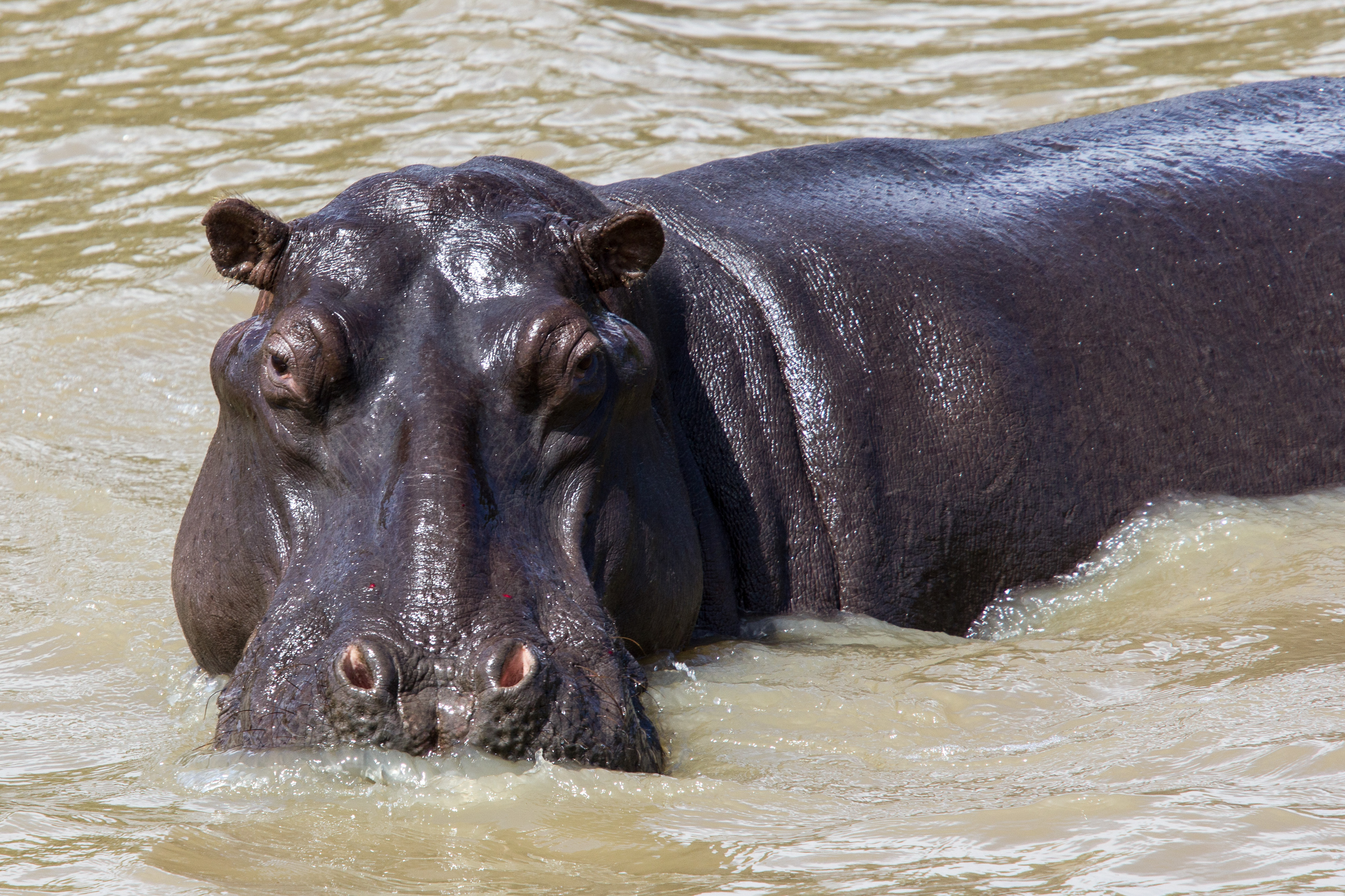ISimangaliso Wetland Park on:
[Wikipedia]
[Google]
[Amazon]
iSimangaliso Wetland Park (previously known as the Greater St. Lucia Wetland Park) is situated on the east coast of KwaZulu-Natal,


 The park was proclaimed a world heritage site because of the rich
The park was proclaimed a world heritage site because of the rich
St Lucia
Official site of iSimangaliso Wetland Park
St. Lucia South Africa Website
Lake St. Lucia
{{DEFAULTSORT:Isimangaliso Wetland Park World Heritage Sites in South Africa Umfolozi River 1895 in South Africa Ezemvelo KZN Wildlife Parks Ramsar sites in South Africa
South Africa
South Africa, officially the Republic of South Africa (RSA), is the Southern Africa, southernmost country in Africa. It is bounded to the south by of coastline that stretch along the Atlantic Ocean, South Atlantic and Indian Oceans; to the ...
, about 235 kilometres north of Durban
Durban ( ) ( zu, eThekwini, from meaning 'the port' also called zu, eZibubulungwini for the mountain range that terminates in the area), nicknamed ''Durbs'',Ishani ChettyCity nicknames in SA and across the worldArticle on ''news24.com'' from ...
by road. It is South Africa's third-largest protected area, spanning 280 km of coastline, from the Mozambican border in the north to Mapelane south of the Lake St. Lucia estuary
An estuary is a partially enclosed coastal body of brackish water with one or more rivers or streams flowing into it, and with a free connection to the open sea. Estuaries form a transition zone between river environments and maritime environm ...
, and made up of around 3,280 km2 of natural ecosystem
An ecosystem (or ecological system) consists of all the organisms and the physical environment with which they interact. These biotic and abiotic components are linked together through nutrient cycles and energy flows. Energy enters the syste ...
s, managed by the iSimangaliso Authority. The park includes:
* Lake St. Lucia
* St. Lucia Game Reserve
* False Bay Park
* Kosi Bay
Kosi Bay is a series of four interlinked lakes in the Maputaland area of KwaZulu-Natal, South Africa.
Ecology
The lakes form part of the iSimangaliso Wetland Park, a UNESCO World Heritage Site.
The closest town is Manguzi, some away from it. K ...
* Lake Eteza Nature Reserve
* Lake Sibhayi
* St. Lucia Marine Reserve
* St. Lucia Marine Sanctuary
* Sodwana Bay National Park
* Mapelane Nature Reserve
* Maputaland Marine Protected Area
* Cape Vidal
* Ozabeni
* Mfabeni
* Tewate Wilderness Area
* Mkuze Game Reserve
The park was previously known as the Greater St. Lucia Wetland Park, but was renamed effective 1 November 2007. The word ''isimangaliso'' means "a miracle" or "something wondrous" in Zulu. The name came as a result of Shaka's subject having been sent to the land of the Tsonga. When he came back he described the beauty that he saw as a miracle.
Transfrontier parks
The park is part of a transfrontier marine park, the Ponta do Ouro-Kosi Bay Transfrontier Conservation Area, straddling South Africa,Mozambique
Mozambique (), officially the Republic of Mozambique ( pt, Moçambique or , ; ny, Mozambiki; sw, Msumbiji; ts, Muzambhiki), is a country located in southeastern Africa bordered by the Indian Ocean to the east, Tanzania to the north, Malawi ...
, and Eswatini. The marine conservation area is included in the Greater Lubombo Transfrontier Conservation Area.

History
Until 1895, the bay had been a home of theTsonga people
The Tsonga people ( ts, Vatsonga) are a Bantu peoples, Bantu ethnic group primarily native to Southern Mozambique and South Africa (Limpopo and Mpumalanga). They speak Xitsonga, a Southern Bantu language.
A very small number of Tsonga people ar ...
and their Tsonga fish kraal. This is the original and the natural home of the Tsonga people
The Tsonga people ( ts, Vatsonga) are a Bantu peoples, Bantu ethnic group primarily native to Southern Mozambique and South Africa (Limpopo and Mpumalanga). They speak Xitsonga, a Southern Bantu language.
A very small number of Tsonga people ar ...
and they have lived here for more than 1000 years. Records from early Portuguese
Portuguese may refer to:
* anything of, from, or related to the country and nation of Portugal
** Portuguese cuisine, traditional foods
** Portuguese language, a Romance language
*** Portuguese dialects, variants of the Portuguese language
** Portu ...
sailors rightfully point out this area to be occupied by the Tsonga people and further down south. The area was also known as Tembeland or Thongaland but the name fell into disuse around the early 1900s. The area was ruled by a Tsonga branch of the Vahlanganu (Tembe). The Swiss missionary, Reverend Henri-Alexandre Junod (known as HA Junod), conducted a scientific and ethnographic study of the Tsonga people during the early 1890s and produced a detailed map, showing the occupation of the bay by the Tsonga Tembe people. Junod showed in his map that the area was known as Tembeland and that the Tembe capital city was located in the St Lucia bay, and that by 1906, the Tsonga people occupied the land from St Lucia to Valdezia
Valdezia is a sprawling rural settlement situated at the foothills of the Soutpansberg mountain range in Louis Trichardt, Limpopo Province, South Africa. It was formerly known as Albasini before Swiss Missionaries renamed it Valdezia in 1875. The ...
in the Spelenkon district of the Transvaal province
The Province of the Transvaal ( af, Provinsie van Transvaal), commonly referred to as the Transvaal (; ), was a province of South Africa from 1910 until 1994, when a new constitution subdivided it following the end of apartheid. The name "Trans ...
, known today as Limpopo Province
Limpopo is the northernmost province of South Africa. It is named after the Limpopo River, which forms the province's western and northern borders. The capital and largest city in the province is Polokwane, while the provincial legislature is ...
. St Lucia bay and Maputo bay
Maputo Bay ( pt, Baía de Maputo), formerly also known as Delagoa Bay from ''Baía da Lagoa'' in Portuguese, is an inlet of the Indian Ocean on the coast of Mozambique, between 25° 40' and 26° 20' S, with a length from north to south of over 90&n ...
are one land and they belong to the Tsonga people, Tsonga villages were built from St Lucia bay until Maputo
Maputo (), formerly named Lourenço Marques until 1976, is the capital, and largest city of Mozambique. Located near the southern end of the country, it is within of the borders with Eswatini and South Africa. The city has a population of 1,0 ...
and they were not separated by any natural division. Around St Lucia, the ruling chief was the Tembe Royal Family, while around Maputo, the ruling class was the Maputo royal family, who are all of the Vahlanganu branch of the Tsonga people. In and around Maputo and St Lucia bay (Tembeland), the language spoken is Ronga, which according to the Swiss Missionary, Rev HA Junod, is not an independent language but a dialect of Xitsonga
Tsonga () or Xitsonga ( ''Xitsonga'') as an endonym, is a Bantu language spoken by the Tsonga people of southern Africa. It is mutually intelligible with Tswa and Ronga and the name "Tsonga" is often used as a cover term for all three, als ...
. According to Rev Junod, Ronga language is so similar to Xitsonga
Tsonga () or Xitsonga ( ''Xitsonga'') as an endonym, is a Bantu language spoken by the Tsonga people of southern Africa. It is mutually intelligible with Tswa and Ronga and the name "Tsonga" is often used as a cover term for all three, als ...
that it cannot be regarded an independent language but is a dialect of a major language known today as Xitsonga.
St. Lucia was first named in 1554 ''Rio dos Medos do Ouro'' (alternatively ''Rio dos Médãos do Ouro'' — ''River of the Gold Dunes'') by the survivors of the Portuguese
Portuguese may refer to:
* anything of, from, or related to the country and nation of Portugal
** Portuguese cuisine, traditional foods
** Portuguese language, a Romance language
*** Portuguese dialects, variants of the Portuguese language
** Portu ...
ship ''Saint Benedict''. At this stage, only the Tugela River
The Tugela River ( zu, Thukela; af, Tugelarivier) is the largest river in KwaZulu-Natal Province, South Africa. With a total length of , it is one of the most important rivers of the country.
The river originates in Mont-aux-Sources of the D ...
mouth was known as St. Lucia. Later, in 1575, the Tugela River was named Tugela. On 13 December 1575, the day of the feast of Saint Lucy, Manuel Peresterello renamed the mouth area to Santa Lucia.
:In 1822, St. Lucia was proclaimed by the British
British may refer to:
Peoples, culture, and language
* British people, nationals or natives of the United Kingdom, British Overseas Territories, and Crown Dependencies.
** Britishness, the British identity and common culture
* British English, ...
as a township.
:In 1895, St. Lucia Game Reserve, 30 km north of the town was proclaimed.
:In 1971, St. Lucia Lake and the turtle beaches and coral reefs of Maputaland have been listed by the Convention on Wetlands of International Importance (Ramsar Convention
The Ramsar Convention on Wetlands of International Importance Especially as Waterfowl Habitat is an international treaty for the conservation and sustainable use of Ramsar site, Ramsar sites (wetlands). It is also known as the Convention on W ...
).
:In December 1999, the park was declared a UNESCO
The United Nations Educational, Scientific and Cultural Organization is a specialized agency of the United Nations (UN) aimed at promoting world peace and security through international cooperation in education, arts, sciences and culture. It ...
World Heritage Site
A World Heritage Site is a landmark or area with legal protection by an international convention administered by the United Nations Educational, Scientific and Cultural Organization (UNESCO). World Heritage Sites are designated by UNESCO for h ...
at an unveiling ceremony, where Nelson Mandela was the guest of honour.
Biodiversity
 The park was proclaimed a world heritage site because of the rich
The park was proclaimed a world heritage site because of the rich biodiversity
Biodiversity or biological diversity is the variety and variability of life on Earth. Biodiversity is a measure of variation at the genetic (''genetic variability''), species (''species diversity''), and ecosystem (''ecosystem diversity'') l ...
, unique ecosystems and natural beauty occurring in a relatively small area. The reason for the huge diversity in fauna and flora is the great variety of different ecosystems on the park, ranging from coral reef
A coral reef is an underwater ecosystem characterized by reef-building corals. Reefs are formed of colonies of coral polyps held together by calcium carbonate. Most coral reefs are built from stony corals, whose polyps cluster in groups.
C ...
s and sandy beaches to subtropical dune forests, savanna
A savanna or savannah is a mixed woodland- grassland (i.e. grassy woodland) ecosystem characterised by the trees being sufficiently widely spaced so that the canopy does not close. The open canopy allows sufficient light to reach the ground to ...
s, and wetland
A wetland is a distinct ecosystem that is flooded or saturated by water, either permanently (for years or decades) or seasonally (for weeks or months). Flooding results in oxygen-free (anoxic) processes prevailing, especially in the soils. The p ...
s. Animals occurring on the park include elephant
Elephants are the largest existing land animals. Three living species are currently recognised: the African bush elephant, the African forest elephant, and the Asian elephant. They are the only surviving members of the family Elephantidae ...
, leopard, black
Black is a color which results from the absence or complete absorption of visible light. It is an achromatic color, without hue, like white and grey. It is often used symbolically or figuratively to represent darkness. Black and white ...
and southern white rhino
The southern white rhinoceros or southern white rhino (''Ceratotherium simum simum'') is one of the two subspecies of the white rhinoceros (the other being the much rarer northern white rhinoceros). It is the most common and widespread subspecies ...
, Cape buffalo, and in the ocean, whale
Whales are a widely distributed and diverse group of fully aquatic placental marine mammals. As an informal and colloquial grouping, they correspond to large members of the infraorder Cetacea, i.e. all cetaceans apart from dolphins and ...
s, dolphin
A dolphin is an aquatic mammal within the infraorder Cetacea. Dolphin species belong to the families Delphinidae (the oceanic dolphins), Platanistidae (the Indian river dolphins), Iniidae (the New World river dolphins), Pontoporiidae (the ...
s, and marine turtles including the leatherback
The leatherback sea turtle (''Dermochelys coriacea''), sometimes called the lute turtle or leathery turtle or simply the luth, is the largest of all living turtles and the heaviest non-crocodilian reptile, reaching lengths of up to and weights ...
and loggerhead turtles.
The park is also home to 1,200 crocodiles and 800 hippopotami.
In December 2013, after 44 years of absence, African lions were reintroduced to iSimangaliso.
There are large outcroppings of underwater reefs which are home to brightly coloured fish and corals. Some of the most spectacular coral diversity in the world is located in Sodwana Bay. The reefs are inhabited by colour-changing octopuses and squid ready to ambush unsuspecting prey. Occasionally gigantic whale shark
The whale shark (''Rhincodon typus'') is a slow-moving, filter-feeding carpet shark and the largest known extant fish species. The largest confirmed individual had a length of .McClain CR, Balk MA, Benfield MC, Branch TA, Chen C, Cosgrove J, ...
s can be seen gliding through the water, mouth agape to scoop up tiny plankton
Plankton are the diverse collection of organisms found in water (or air) that are unable to propel themselves against a current (or wind). The individual organisms constituting plankton are called plankters. In the ocean, they provide a crucia ...
.
Twenty-four species of bivalve molluscs are recorded in St. Lucia Lake, which constitutes a considerable portion of the park.Nel, H. A., Perissinotto, R. & Taylor, R. H. 2012. Diversity of bivalve molluscs in the St. Lucia Estuary, with an annotated and illustrated checklist. ''African Invertebrates
''African Invertebrates'' is a peer-reviewed open access scientific journal that covers the taxonomy, systematics, biogeography, ecology, conservation, and palaeontology of Afrotropical invertebrates, whether terrestrial, freshwater, or ma ...
'' 53 (2): 503-525.
See also
* List of World Heritage Sites in Africa *Protected areas of South Africa
The protected areas of South Africa include national parks and marine protected areas managed by the national government, public nature reserves managed by provincial and local governments, and private nature reserves managed by private landow ...
Notes
References
*External links
St Lucia
Official site of iSimangaliso Wetland Park
St. Lucia South Africa Website
Lake St. Lucia
{{DEFAULTSORT:Isimangaliso Wetland Park World Heritage Sites in South Africa Umfolozi River 1895 in South Africa Ezemvelo KZN Wildlife Parks Ramsar sites in South Africa